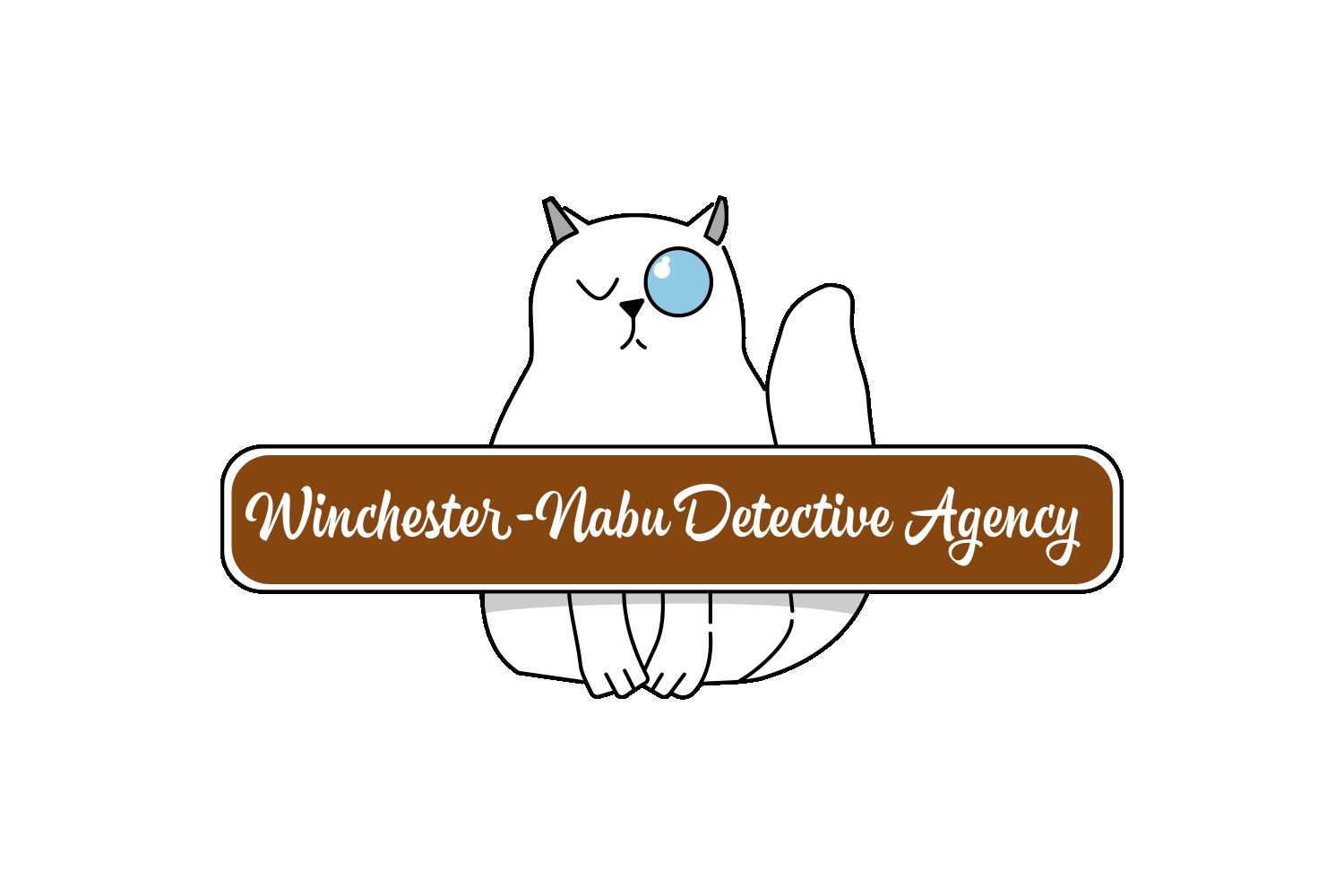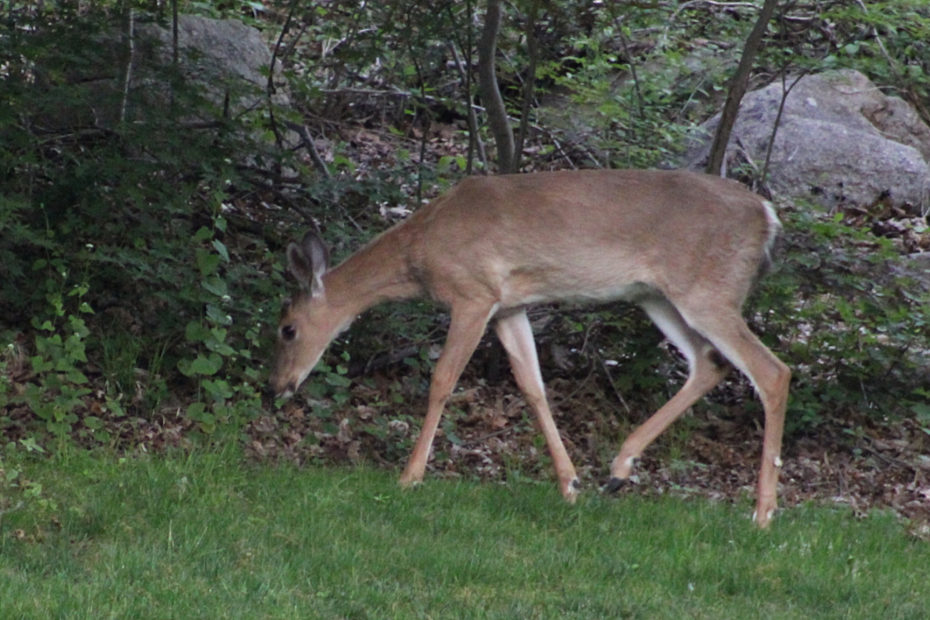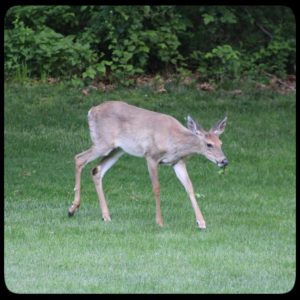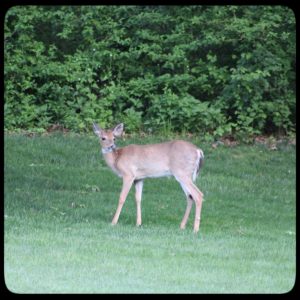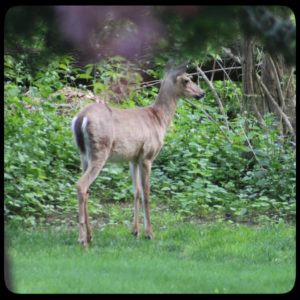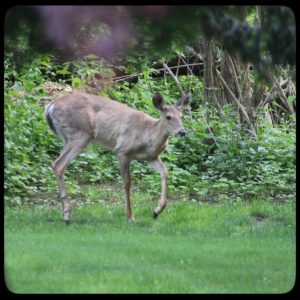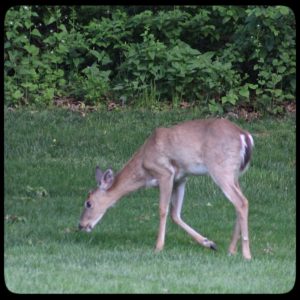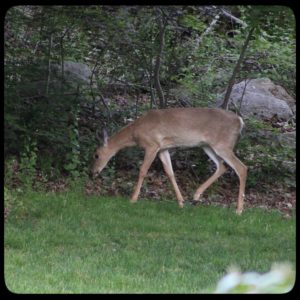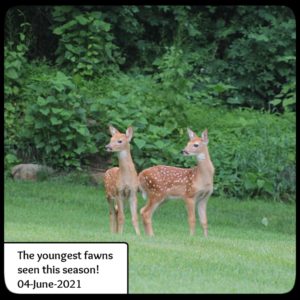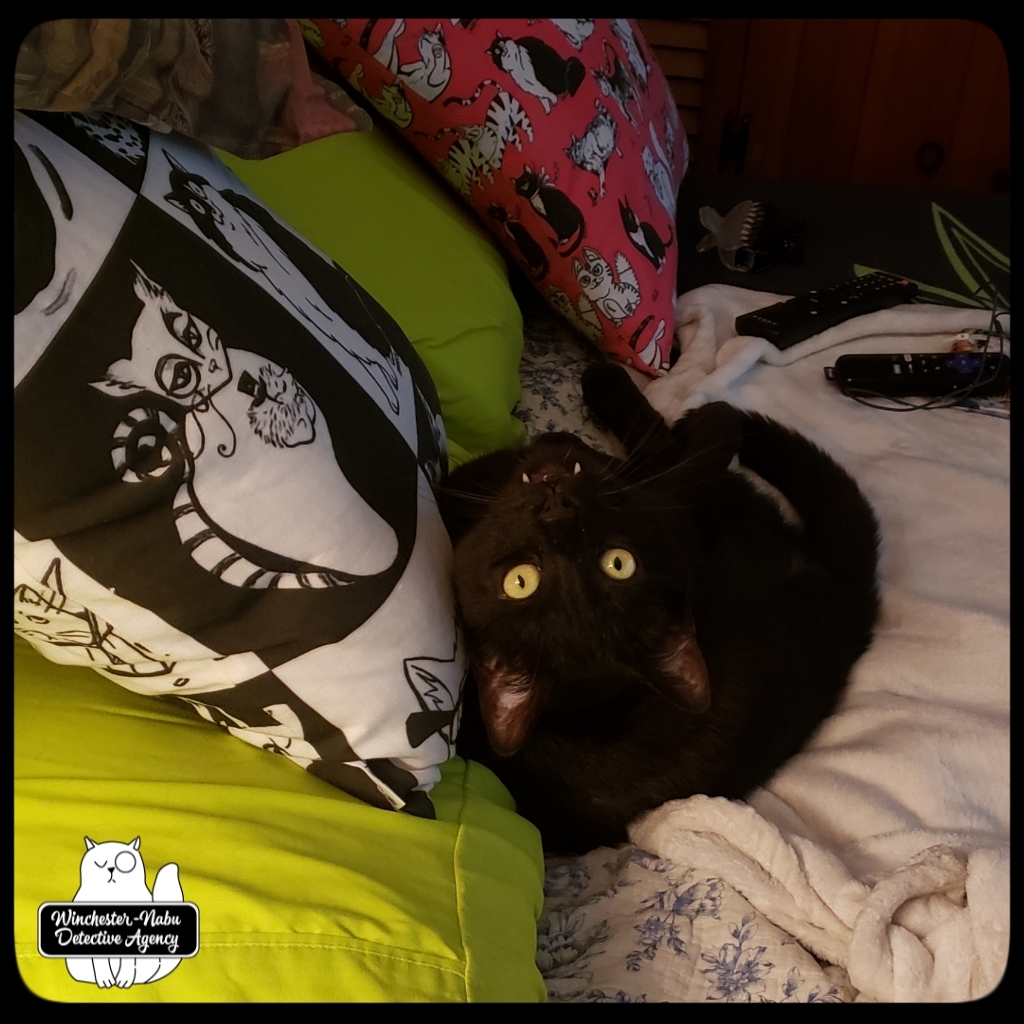AMBER LOVE 12-JULY-2021 This work is supported by the generous backers who adore my cat stories at Patreon.com/amberunmasked and they also get first access to what’s happening with my books and podcast.
Where We Left Off:
The previous case file unpacked huge changes in the chipmunk mafia organization.
A Case of Identity:
This week’s case file revisits the ongoing study of Jersey cryptid hybrids, namely the Jersey devil-deer. The last time we looked closely at the genetics and reproductive possibilities of hybrids in winter, Case File No. 43-199. Now that summer has arrived, we have gotten a few opportunities to watch the white-tailed deer and the Jersey devil-deer pop over to the Winchester-Nabu Detective Agency for visits. They’ve varied in sex determination and ages.
On May 14, 2021, I was able to take several photographs of three creatures while Gus, Ollie, and I were on the observation deck. I used the new Canon Rebel t7 EOS with a zoom lens. I didn’t use a tripod. I find it’s impossible to aim at moving subjects with a tripod so my hands do shake when pressing the shutter button. I tried to brace my arms on the railing when possible.
What you may see, which alarmed us, is how thin the creatures are. It is their normal state for early spring before they’ve had a full season to plump up and end up in the sites of game hunters. Regardless of this being a natural state for the wildlife, it was still sad to see them so thin with ribs clearly showing.
One of the creatures was the mother doe. Another was definitely a button buck — to use the deer terminology. I’m not sure about the third one. These three were of the wingless variety of Jersey devil-deer. They appeared a bit less frightened than others I’ll get to in a moment. Perhaps their desire for food outweighed their fear of humans. The button buck is so named because of the nubby stubby antlers beginning to grow from the forehead. This is an important distinctive for game hunters.
Each year many hunters harvest buck fawns, commonly called “button bucks,” on antlerless deer licenses. Though legal, harvesting these deer may reduce the number of antlered bucks the following year. By learning the difference between adult does and buck fawns and observing the following suggestions, hunters can make a conscious choice about whether to harvest a buck fawn. — Michigan.gov Department of Natural Resources
As with all things scientific there’s a big BUT here. BUT, some female deer have antlers and it’s kind of rare. Are you familiar with the controversy surrounding Olympic cis-female athlete, Caster Semenya? Before anyone jumps on me for “comparing” a human to wildlife… seriously? We’re animals. We’re all animals. And narrowed down to land mammals. Okay? That’s where the comparison comes into play and that is all. As mammals, all of us have hormones like testosterone, estrogen, cortisol, progesterone, etc. We have them in different quantities. Hormones that lead to sex traits (not gender) make people get heated and passionate about their own definitions of categories for animals like humans to fall into.
The court which presides over the Olympics ruled that Caster Semenya and women like her who have naturally occurring greater quantities of testosterone, must medicate themselves to reduce this “male” sex hormone even though women have it too! All women!
How does this tie into our study of the Jersey devil-deer varieties? As you can see by the definition of a button buck, there’s a classification for hunting called “antlerless.” In New Jersey, the antlerless harvest is larger than the antlered harvest. This was a revelation to me since I grew up thinking doe hunting was limited in order to keep reproduction numbers stable and fawns were protected; for some reason killing bucks was allowed — or so I was erroneously led to believe. “Doe season” is its own thing only it’s not really about female does and hinges more on whether or not there are antlers. Hence, the confusion. The hunting regulations are confusing to an outsider like me. During fall archery season, the first kill of each hunter must be an antlerless deer. From there, it seems each week through the winter has its own rule about it. Firearm weeks have their own convoluted criteria too. There’s even a week of unlimited antlerless killing with permitted muzzleloaders. Go nuts.
Female deer can indeed have antlers! According to Bryan, a mammologist at North American Nature, female deer can grow antlers if they have unusually higher testosterone. That’s it! It’s less complicated than figuring out what you can kill on the November Full Moon in Zone 31 of New Jersey. And it’s far less complicated than people who are showing signs of transphobia against cisgender female athletes believe. More testosterone or less testosterone. Still female!
Fun genetics about regular white-tailed deer:
You’re most likely familiar with the common look of a deer: tawny brown coat on top, white bib/belly, fluffy but short tail which is black on the outside and white on the side against the butt. Well, there’s more.
When someone I follow on Instagram posted a photo of a white deer, I couldn’t wait to talk about it with The Cook. She reminded me that our now deceased neighbor had informed us about this special kind of deer. There are two kinds of white deer: piebald and albino.
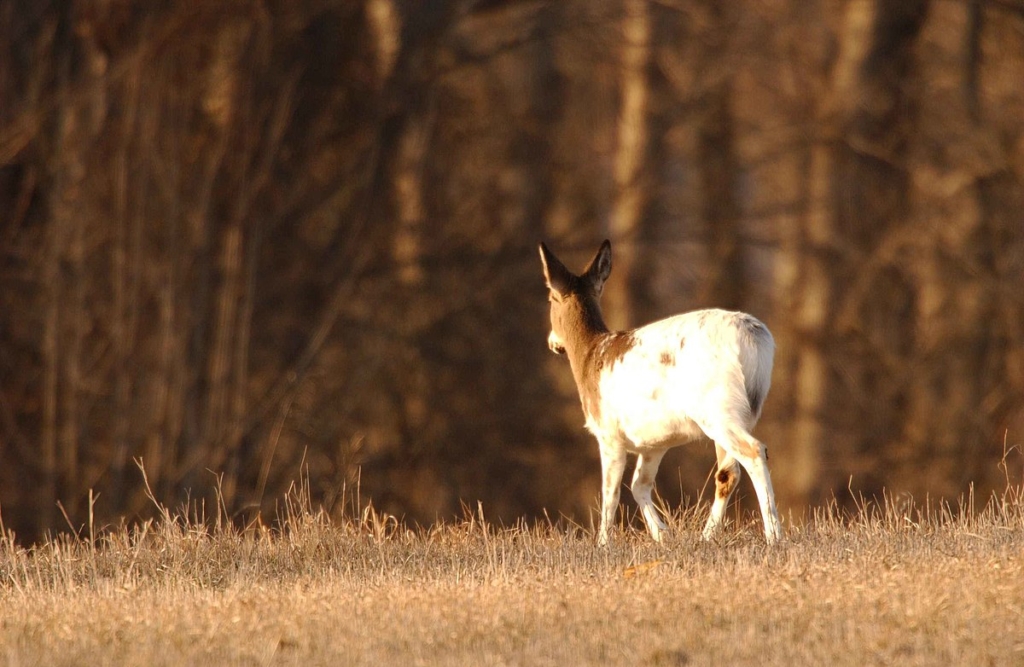
A piebald also has some of the tan patches. Think of it like reverse vitiligo. This genetic condition comes with a price. There are deformities of the skeletal structure and of the internal organs. They are absolutely gorgeous creatures. Albinos are all white including their hooves and have pink eyes. They are more rare than piebalds. Neither of these rare creatures are given any kind of protection status in New Jersey.
Antlerless or Wingless?
If antler growth can be so misunderstood and based on something as simple as a single hormone, then who’s to say Jersey devil-deer hybrids don’t have similar traits? In previous case files, we’ve already noted that there can be wingless devil-deer. If that’s true, then other traits of the Jersey demon DNA like colors, fangs, tail shape, leg length, and antlers are likely to be the same: dominant or recessive.
As we continued to wait for more signs of the white-tailed deer and the Jersey devil-deer creatures in our area, we were delighted to witness a couple of spotted fawns on more than one occasion. These two are much more afraid of humans. Even from far away, if you make any move at all, they’ll take off and run into the woods. In previous years, we’ve see little fawns play like happy puppies, scampering and goofing off in the backyard. We also know that a mother isn’t going to be too far away as the fawns work on their survival and play skills. Yet, she’s not close to them when they come over here. There must be a reason since the older family still sticks together. Hopefully, momma is still alive to care for them. If she’s not, that could be why they aren’t as confident in behavior.
One winged and fanged Jersey devil-deer has visited out in the open during the day. It looks female based on body size and shape. She seems to be sure of her surroundings looking for food. She knows her way through the trails here so very likely considers this her home turf.
Case Findings:
Our studies of the cryptid and land mammal wildlife continue as we note the differences in the creatures coming to the estate. We have at least two separate families (though they may be related to each other) and possibly one Jersey devil-deer who keeps to herself.
Case Status: Open
